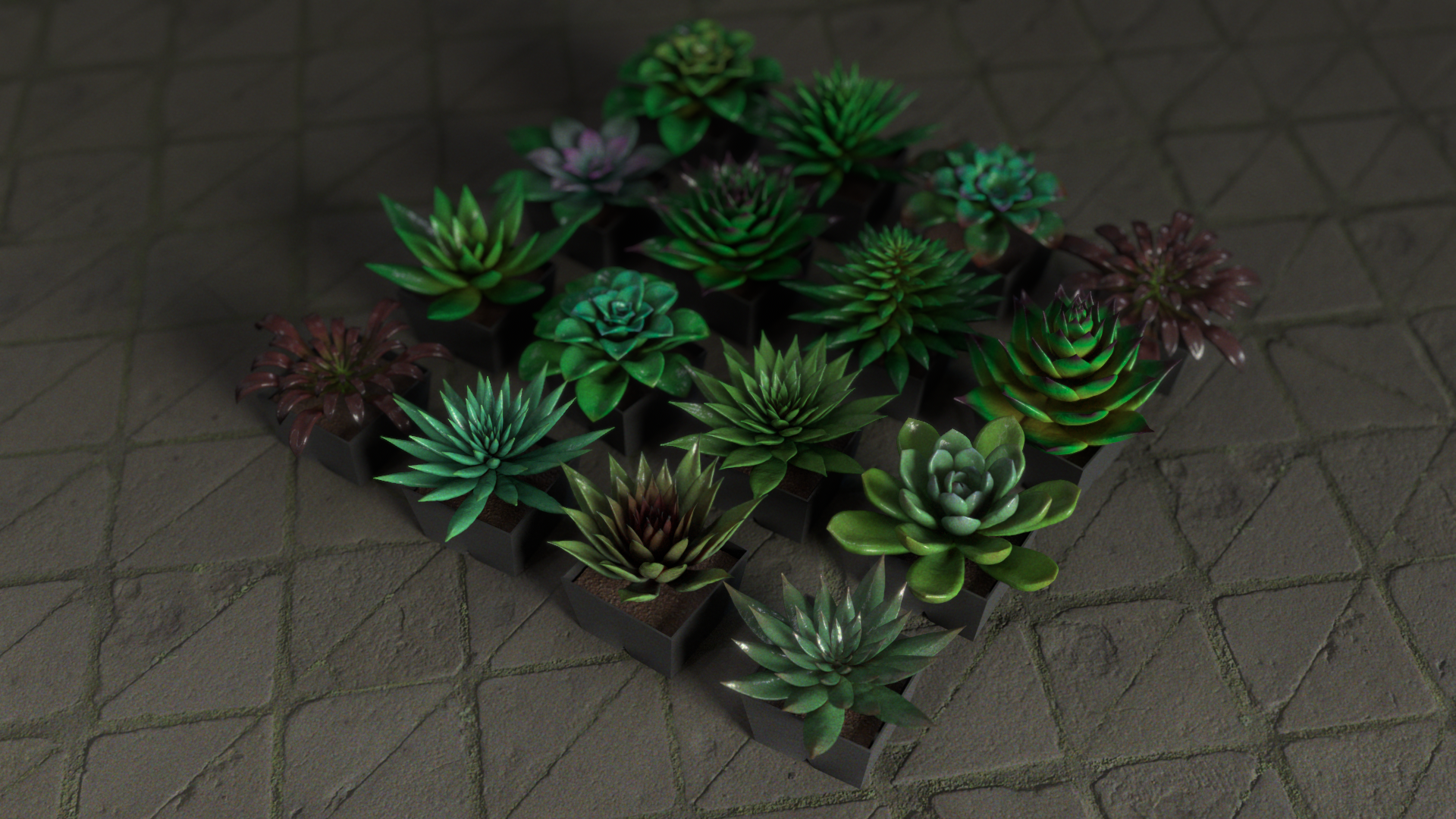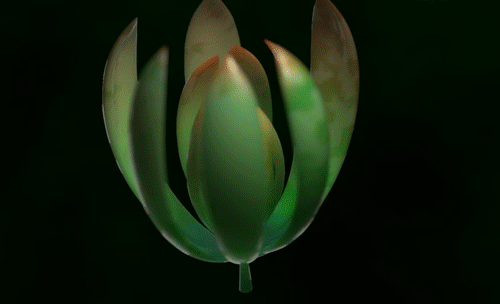
Genesucc
Attempting to mimic the patterns of nature through proceduralism, I decided to build a Houdini tool to model various types of succulents. The tool gives you the ability to adjust various aspects of the leaves, stem and texture of the plant.
You can download and use the Houdini Digital Asset on any project, commercial or otherwise. But please credit Katelyn McGill and add a link to this page.

Breakdown
Here is a quick breakdown of how to use the Houdini Digital asset.

Use the tool to create a variety of species, from echeveria elegans to spiral aloe and haworthia cooperi. Or you can create your own glowy succulent the likes of which are only seen on Pandora.

Adjust the profile, width, thickness and cleft of leaves.

Bend the tip or even the entire leaf. You can also change the quantity of leaves to change it from a little baby succulent to a lush, leafy desert flora.

The height of the stem and the overall plant are completely adjustable. The individual leaves have a color gradient and there is also a control to adjust the shade variation on the plant as a whole. In order to get the powdery effect that adds an extra layer of realism, I’ve applied a noise texture with adjustable frequency and offset that is bound to the roughness property when rendering with a Principled Shader in mantra.

By using Houdini’s hiargen tool, I was able to convert this typical succulent into a fuzzy echeveria setosa or “Mexican Firecracker.”

This studio render of a hyper-realistic succulent was achieved with a lot of reflectivity and coat mixed in with some subsurface scattering to get that slightly translucent look.

The UVs on Genesucc are completely procedural as well. That means you can add textures to the leaves and stem that will follow the bends, twists and turns they take. The result doesn’t have to be realistic. I was able to render this futuristic robot flower using a gold shader and a bit of turbulent noise,

The properties can be animated to show the plant growth over time, changing color, thickness and height.